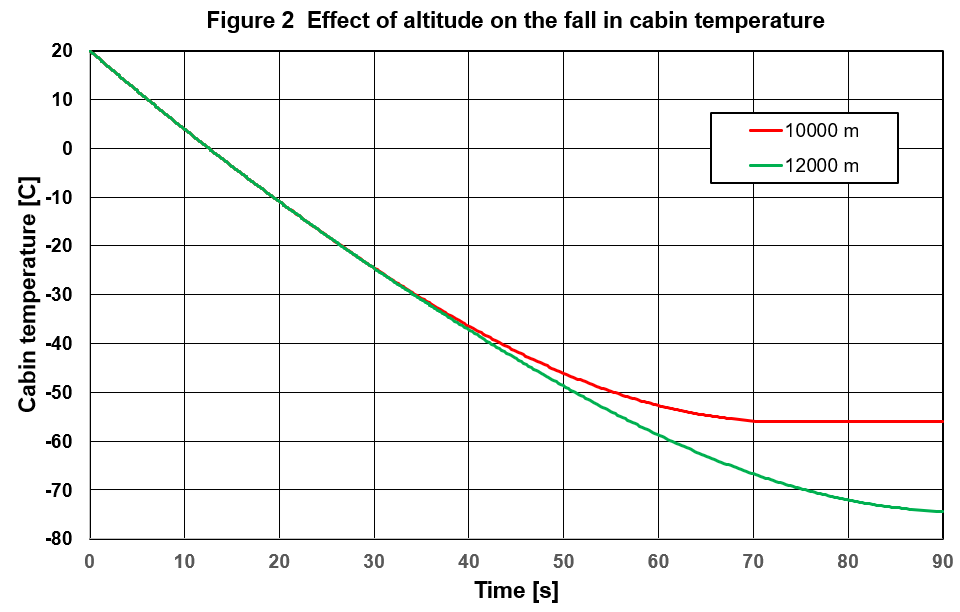Case Study – Depressurization of an Airliner
The challenge
If a cabin window in an airliner shatters then the cabin pressure will fall rapidly
until it equals the outside atmospheric pressure. Often the pilot will put the
airliner into a rapid descent into denser air in order to slow the rate of
pressure loss. A forensics team would like to be able to calculate the rate at
which the cabin pressure falls in different scenarios. In each scenario the
reference case is an airliner in level flight at 10,000 m with a cabin volume of
800 m3, an initial cabin altitude and temperature of 2,400 m and
20°C, respectively, and a window area of 0.096 m2. In the first
scenario the altitude of the airliner is changed to 12,000 m, in the second
scenario the cabin volume is changed to 1,000 m3, and in the third
scenario the airliner is made to descend at (a) 1,200 m s-1 and
(b) 1,800 m s-1.
The solution
The fuselage of an airliner flying at high altitude can be regarded as an insulated
pressure vessel, and the pressure loss following the shattering of a cabin window
can be calculated with good accuracy in just the same way as the discharge of a
pressure vessel when the valve is suddenly opened fully. If the airliner is made
to descend, then the mathematical model of the pressure vessel must be modified to
account for the rise in back pressure with time.
Atkinson Science modified the Windows application developed for the case study
Discharge of a pressure vessel, making the back pressure change during the
discharge according to the International Standard Atmosphere and the rate of
descent of the airliner. Figure 1 shows the fall in cabin pressure for the
reference case and the first scenario. Initially, there is no difference in the
rate at which the cabin pressure falls at altitude 10,000 m and altitude 12,000 m,
because the discharge from the cabin chokes at the window and is therefore
independent of the atmospheric pressure. Once the discharge has unchoked the cabin
and outside pressures equalise more quickly at 10,000 m because the outside
pressure is higher. Figure 2 shows the effect of the shattered window on the
temperature inside the cabin. The temperature of the air drops rapidly as the air
expands. This figure and Figure 1 bring to light the catastrophic nature of the
incident. At either altitude the cabin temperature falls to below −50°C within one
minute. Within 22 seconds the cabin pressure falls below the critical level of
0.5 bar, at which hypoxia and unconsciousness can occur.


Figure 3 shows the fall in pressure for the reference case and the second scenario
in which the cabin volume is increased to 1,000 m3. As would be
expected, the depressurization is slower because of the greater cabin volume, but
there are only an extra 5 seconds before the cabin pressure falls below the
critical level.

Figure 4 shows the fall in pressure for the reference case and the third scenario
in which the airliner is made to descend at 1,200 m s-1 and
1,800 m s-1. This is perhaps the most disconcerting figure. It shows
that the pilot’s attempts to maintain the cabin pressure above the critical level
of 0.5 bar are futile. Whatever the rate of descent, the cabin pressure does not
stop falling until it is below 0.35 bar.

The benefits
Atkinson Science provided the forensics team with a software tool to calculate the
fall in cabin pressure of an airliner for different scenarios when a cabin window
shatters. The software tool exposes the catastrophic nature of the event in
whichever scenario it occurs.